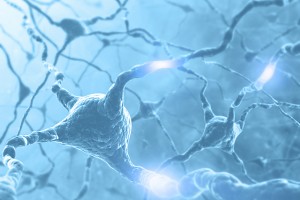
Keagan Peterson’s first birthday party was a happy occasion—cake, balloons and gifts—but his mom, Stephenie, couldn’t shake the feeling that something was wrong. Keagan, now 6, seemed to be suffering from a major sensory overload.
“He didn’t want to touch the frosting on his birthday cake. He was greatly upset by the feeling of the grass on his feet. And I noticed that he wouldn’t sustain eye contact,” she recalls.
By age 2, he’d been diagnosed with Sensory Processing Disorder (SPD). But the diagnosis didn’t explain all of Keagan’s quirks: his habit of repeating words and phrases, his obsession with patterns or his penchant for gigantic violent meltdowns.
He was officially diagnosed with autism at 3, but his symptoms, such as the inability to read social cues, avoidance of eye contact, high intelligence and advanced vocabulary, were more consistent with Asperger syndrome, one of numerous developmental disorders on the autism spectrum. Earlier this year, his 4-year-old sister Eden received the same diagnosis: high-functioning autism or Asperger syndrome.
Two kids with three labels between them—SPD, autism and Asperger’s—made life complex, and insurance paperwork was a nightmare. It’s a familiar scenario for families with a child (or two) on the spectrum: Because many spectrum disorders have overlapping symptoms, arriving at an accurate diagnosis and getting needed treatments can be a murky medical maze.
A New Label
It may be getting a little clearer. At least, that’s the hope of the American Psychiatric Association, who earlier this year removed the diagnosis of Asperger syndrome from the Diagnostic and Statistical Manual of Mental Disorders (DSM). Under the new definition, Asperger’s is recognized as a form of high-functioning autism and is grouped under the autism umbrella, along with other familiar spectrum disorders like pervasive developmental disorder and childhood disintegrative disorder. The change could make it easier for those on the spectrum to get needed treatments, since certain states provide services for autism but not for related spectrum disorders like Asperger’s.
The DSM is the diagnostic bible used by mental health professionals, education providers, and insurance companies. Its language channels the flow of treatment resources, helping schools determine how to allocate special education funding and informing insurance companies’ decisions about coverage. Changes to its verbiage are a big deal, and not without controversy. This one sparked angry protest and impassioned petitions from Global and Regional Asperger Syndrome Partnership and the Asperger’s Association of New England.
New research is stirring up more controversy by making the case that Asperger’s is, in fact, a distinct disorder. According to a study published in BMC Medicine, children with Asperger’s have different electroencephalography (EEG) patterns (or brain waves) than children with autism–showing that Asperger’s is not merely a mild form of autism, but an entirely separate condition with unique neurological implications.
Many health professionals acknowledge that Asperger syndrome has unique characteristics that differentiate it from autism: Individuals with Asperger’s don’t have the language deficit often seen in those with autism, are not intellectually impaired, and can have tremendous focus. These uniquely “Aspie” (a friendly nickname for those with Asperger’s) characteristics will continue to shape treatments and therapies for those with Asperger’s, even under its new “autism” label.
Regardless of how the disorder is labeled, early intervention is key to successful treatment.
“While the brain remains plastic throughout life and new things can always be learned, the greatest plasticity is during the younger years,” says Stephen Shore, Ed.D., author of “Beyond the Wall: Personal Experiences with Autism and Asperger Syndrome.” So interventions like occupational therapy, speech therapy, and specialized social skills groups may have the greatest impact—and the best chance of positively shaping a child’s future—if they’re initiated during early childhood.
Sneaky Symptoms
Asperger syndrome can be tricky to spot, particularly in toddlerhood, because it doesn’t cause speech delays. But symptoms often appear before age 3, and parents can pick up on the signs if they know what to watch for, says Gary A. Stobbe, M.D.
Many times, children with Asperger’s begin speaking early, like Keagan, who knew hundreds of words before his first birthday. Children with Asperger’s can have large vocabularies, but may speak in a monotone or with an odd inflection. They may be unable to match their vocal tones to their surroundings—they might not use a quiet voice at the library or at the movies, for example. They may lack physical coordination; movements may seem either stiff and stilted or overly bouncy, according to the National Institute of Neurological Disorders and Stroke.
Individuals with Asperger’s or high-functioning autism can struggle with “executive functioning,” or the ability to plan and organize, says Stobbe. Bigger challenges come during the school years, when children are expected to work on projects over several days and turn in homework.
Diagnosis Drama
Ultimately, the precise name of the disorder may not matter much; a parent’s job remains the same, notes Stobbe. “Don’t let the diagnosis dominate your planning and parenting. Your goal as a parent is to provide an environment to help your child be happy and succeed.”
Life in a home full of Aspies has not been easy, says Stephenie. But it’s wonderful. “My kids are so smart, so funny, so amazing. And it isn’t like they are great kids in spite of Asperger’s. A lot of the amazing things about them are in part because of their Asperger’s.”
—————–
Malia Jacobson is a nationally published journalist and mom of three.
Published: February 2014
Leave a Reply